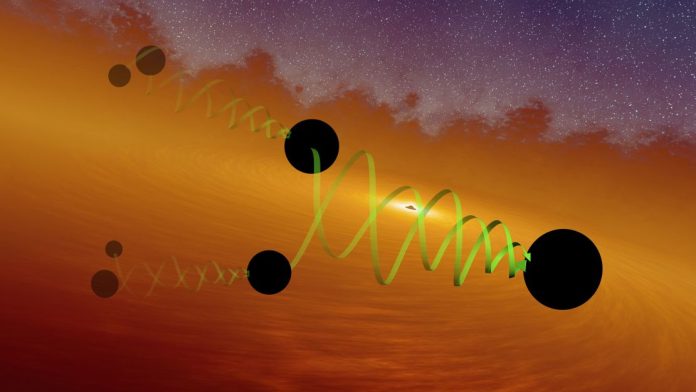Scientists have detected ripples in space-time caused by the powerful collision of two giant black holes spiralling towards each other far beyond the Milky Way.
The event occurred in November 2023 and was recorded by LIGO gravitational wave detectors in Washington and Louisiana. The signal they picked up came from a distance of about 10 billion light years. It indicates the collision of two black holes with masses of 103 and 137 solar masses, respectively. The merger resulted in a black hole with a mass of 265 solar masses, making this event the largest ever recorded.
Physicists from LIGO suggest that such massive black holes could have formed as a result of previous mergers. The detectors recorded the so-called damping phase — the moment when the newly formed black hole stabilised. The waves that reached earth caused vibrations that were thousands of times smaller than the width of a proton.
Earlier, physicists from the United States and China predicted the lifespan of the universe. Their calculations indicate that its expansion will stop when the universe reaches 33.3 billion years old.
Czech physicists, who published their research on the arXiv website, have previously shown that life could exist on a planet orbiting a black hole.
Before the first gravitational wave detectors were built in the 1990s, scientists could only observe the universe through electromagnetic radiation: visible light, infrared and radio waves. Gravitational wave observatories have provided a new view of space, allowing researchers to see events that were previously hidden from them.
